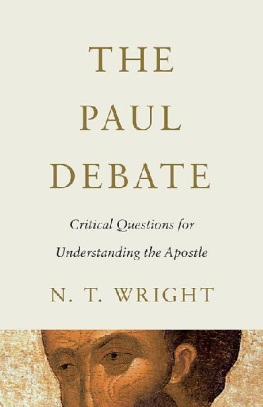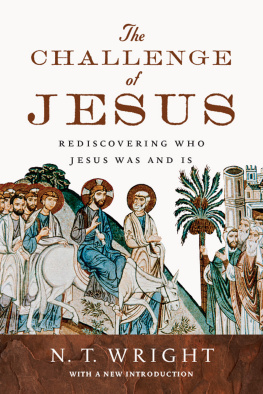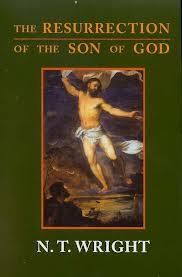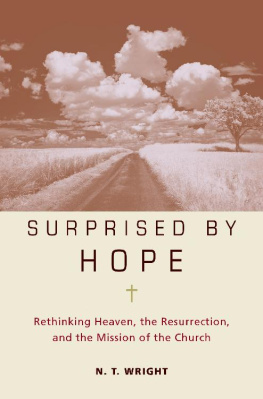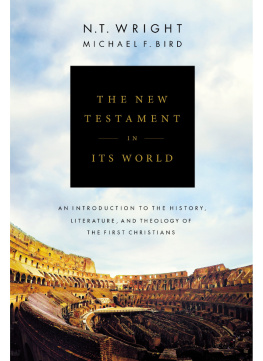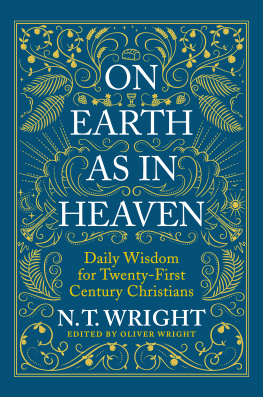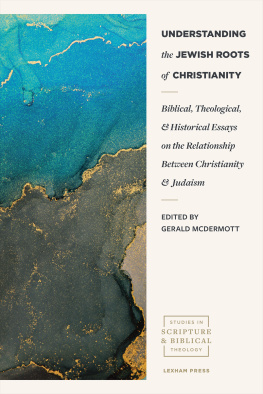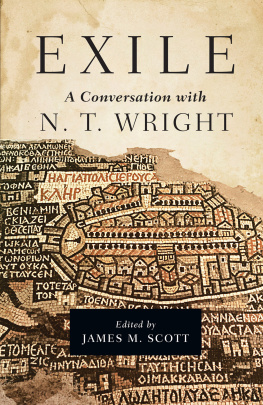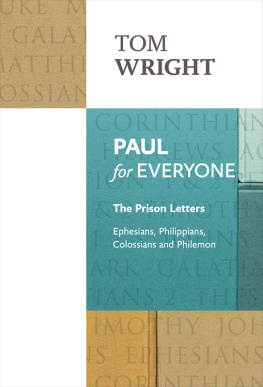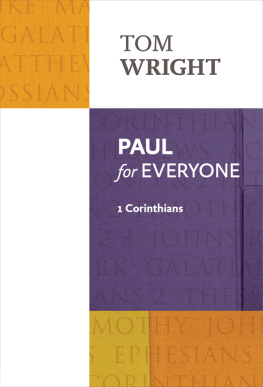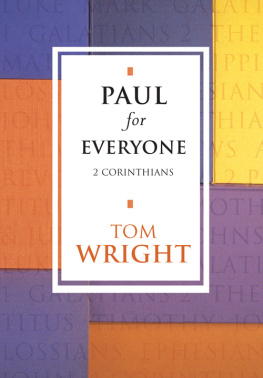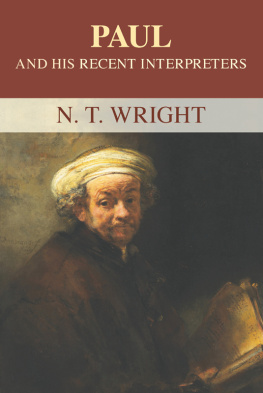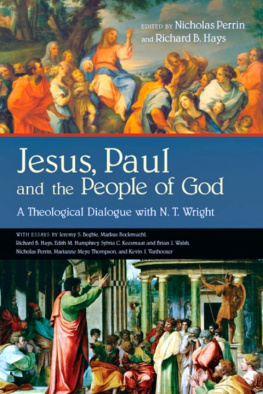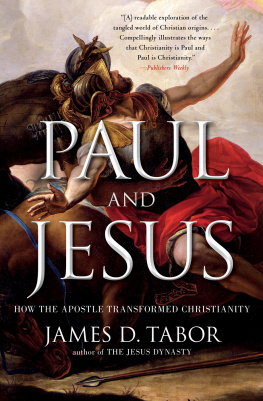The Paul Debate
Critical Questions for Understanding the Apostle
N. T. Wright
Baylor University Press
2015 by Baylor University Press
Waco, Texas 76798
All Rights Reserved. No part of this publication may be reproduced, stored in a retrieval system, or transmitted, in any form or by any means, electronic, mechanical, photocopying, recording, or otherwise, without the prior permission in writing of Baylor University Press.
Cover design by Will Brown
Cover art: St. Paul, 1407 (tempera on panel), Rublev, Andrei (c. 13701430) / Tretyakov Gallery, Moscow, Russia / Bridgeman Images
Book Design by Diane Smith
978-1-4813-0469-6 (ePub)
978-1-4813-0485-6 (Mobi)
This ebook was converted from the original source file. Readers who encounter any issues with formatting, text, linking, or readability are encouraged to notify the publisher at BUP_Production@baylor.edu. Some font characters may not display on all ereaders.
To inquire about permission to use selections from this text, please contact Baylor University Press, One Bear Place, #97363, Waco, Texas 76798.
Library of Congress Cataloging-In-Publication Data
Wright, N. T. (Nicholas Thomas)
The Paul debate : critical questions for understanding the apostle / N.T. Wright, Baylor University Press.
122 pages cm
ISBN 978-1-4813-0417-7 (hardback : alk. paper)
1. Bible. Epistles of PaulTheology. I. Title.
BS2650.52.W75 2015
227.06dc23
2015018242
Contents
Knowing the Name or Having the Mind?
What Did Paul Know, and How Did He Come to Know It?
Covenantal Narrative or Cosmic Invasion?
Messianic Israel or Saved Sinners?
Pauls and Ours
Many colleagues and friends have read my book Paul and the Faithfulness of God (PFG). They have kindly responded with comments, blogs, criticisms, and in several cases published reviews. A quick survey of those already published reviews reads like a Whos Who of current Anglophone New Testament studiesBarclay, Bockmuehl, de Boer, Brown, Campbell, Dunn, Fredriksen, Gathercole, Gaventa, Gorman, Hurtado, McKnight, Moo, Schreiner, Starling, Tilling, and Witherington. (A volume is in preparation for the WUNT series from Tbingen, which will include essays by scholars from other backgrounds as well, together with my response to them specifically.) The list is as scary as it is gratifying. I wish to express my thanks to them all, even if in some cases their reviews have been unflattering. I should also acknowledge that several of the reviews (those of Barclay, de Boer, Campbell, Fredriksen, and Gaventa come particularly to mind) have made me think not just about what I have tried to say but how I have tried to say it. I fully understand that my writing style, for which many readers have been grateful, can also be easily misunderstoodthough I suspect there remains real difficulty with what I say as much as with how I have said it. But I remain grateful for searching reviews that have named particular issues and invited me to reconsider. Scholarship is always a work in progress, and a collaborative one at that. As Ernst Ksemann said about his debate with Krister Stendahl, mutual discussion is an obligation upon us all. I am deeply in my reviewers debt, as I hope the pages that follow will indicate. A list of these reviews appears as an appendix to this volume.
Nearly everyone has commented on, and many have complained about, the length and girth of PFG. My book is branded as gigantic, enormous, exhaustive, sprawling, bloated, and overly ambitious. Reviewers speculate it to be twenty-five times larger than Pauls letterspossibly larger than the Bible itselfand akin to the U.S. Tax Code. They say that reading PFG is trying to tame a monster, and takes the proverbial ten thousand years of Amazing Grace. The book is even said to constitute its own planetary system. Nearly every reviewer chastises me with the comment that less might have been more. I understand these comments, though naturally I disagree with them.
Beyond the sheer size of the book, reviewers have also commented on my rhetoric. Some consider it to be overcooked, runaway, purple, and High Table. Readers point out that I repeat myself. Some are wearied by the prose, finding it excessively baggy. My so-called knock-about lecture-hall style, say some, results in caricature and grand generalisations. I am sometimes shrill; sometimes too hard on those whose readings I reject. I smack their hands. (Curiously, however, I am chided for both over- and under-engaging my critics.) My writing is said to be idiosyncratic and self-indulgent, and limited to an Anglophone scholarship. It seems to some that I have both a box for everything and a magic wand that solves all problems.
Happily, positive estimations equally abound. PFG has been called my summa theologica; an individual work (that is, it does not adhere to a particular school); my most compelling academic book to date; rich and expansive, a magnum opus; a publishing event; an enormous intellectual achievement; a landmark. My reading of Paul is considered original and complete. PFG is said to possess clarity of argument, inner coherence, and accessibility of style.
Responding to these reviews, not line by line but in outline, is the purpose of the present little book. Under threat of my publisher, I have kept the focus upon the issues under debate, rather than individual scholars or schools of thought. Thus, each chapter in what follows turns on a key debatable issue in Paul, a specific either/or, or sometimes several either/ors. Those who have ears will hear my critics and their specific criticisms on every single page that follows. The chapters of this book are steeped in and shaped by the reviews. This method of working is a way of trying to honour the contribution my reviewers have made, without descending to the small-scale point-scoring one meets in the correspondence columns of the weekly reviews like the Times Literary Supplement or the New York Review of Books (if only Professor Snooks had read what I say on page 249, he could not have accused me of such-and-such a view, and so on).
The five chapters represent a response to the five most questioned elements in my book. In fact, nearly all the reviewers I have listed above have lingered on most or all of these points, even if there were other specific points of disagreement as well. The first chapter thus takes up the question of Pauls theological coherence, particularly the way in which his Jewish context, and the story about Israel he inherited, interacted with what he came to believe about Jesus, a christological story. Chapter 2 follows on by tackling the debate over the background, origin, and implications of Pauls Christology. The third chapter addresses the questions of covenant and cosmos, narrative and apocalyptic. Chapter 4 focuses on the debate over Pauls view of who constitutes the people of God; this chapter also addresses the question of whether justification belongs to Pauls soteriology or to his ecclesiology, or somehow to both. The final chapter then traces debates about method, both Pauls and ours, as well as questions of discovery and presentation, again, both Pauls and ours.
As with all history, there is here a problem of scale and complexity. Many times in the last few decades I have received responses to books, articles, and conference papers in which my critics have warned that my attempts at broad summaries, my sketches of large pictures, have not taken sufficient account of the complex detail of the actual evidence. PFG is my response to this: there is the detail, lots of it, pressed down, shaken together, and running over. This has then generated the opposite problem: too much information. Thus the circle continues. The present little book is not so much a guide to

